All about radishes

Radish is one of the most popular vegetables that gardeners and summer residents grow on their backyards. The fact is that eating radishes is very beneficial for your health. It removes toxins from the body, has an anti-inflammatory effect, and enriches the body with vitamins. Radish is consumed fresh, used to prepare salads, which the vegetable gives a piquant taste.
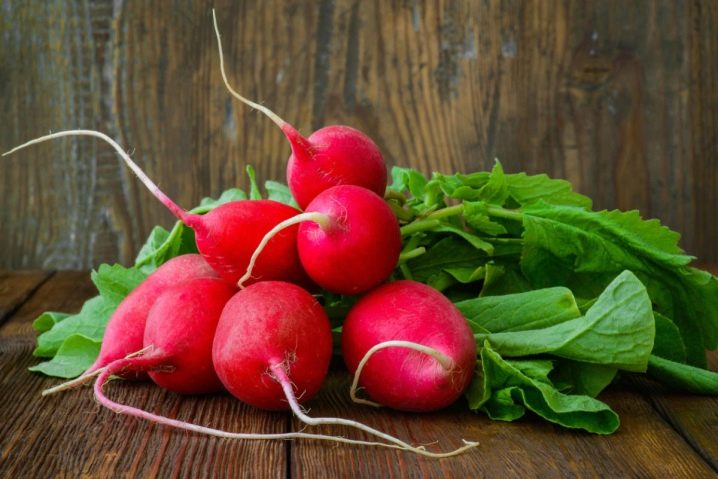
general description
Radish is a famous vegetable that belongs to the cruciferous family. The botanical name of the vegetable culture is Raphanus sativus var. Sativus. The root crop is round or oblong, depending on the variety. The taste is sweet, with bitterness, sometimes spicy.
The plant belongs to the dicotyledonous class. Has a sufficiently developed root system. The root, like the fruit itself, is directly in the ground. Depending on the variety, the fruit can be oval or round. Individual specimens grow to a cylindrical shape.
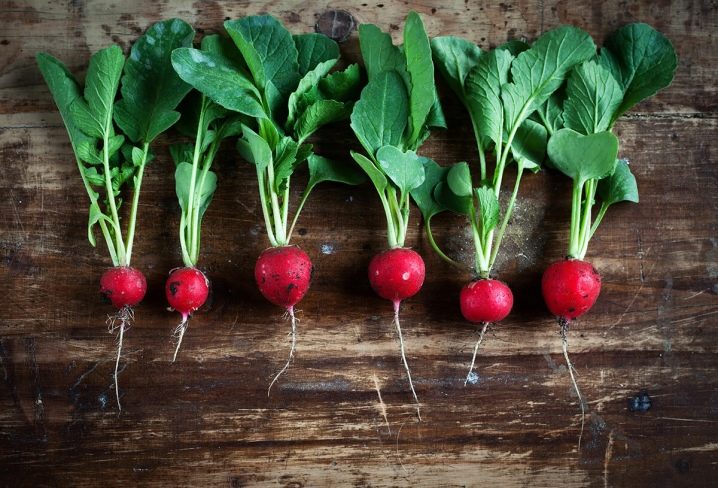
They look quite attractive due to the pleasant raspberry-pink skin color. Inside, the pulp is white or creamy, moderately soft, juicy enough.
The aboveground part of the culture is the tops. The stems are straight, the leaves are oval, rather large. Young tops are tender. Over time, it becomes coarser, insignificant spines appear on the stems.
Radish is 94% water. 100 g of the product contains only 16 kcal. The characteristics of the composition are as follows:
- protein - 1 g;
- fats - 0.1 g;
- carbohydrates - 2 g;
- fiber - 2 g.
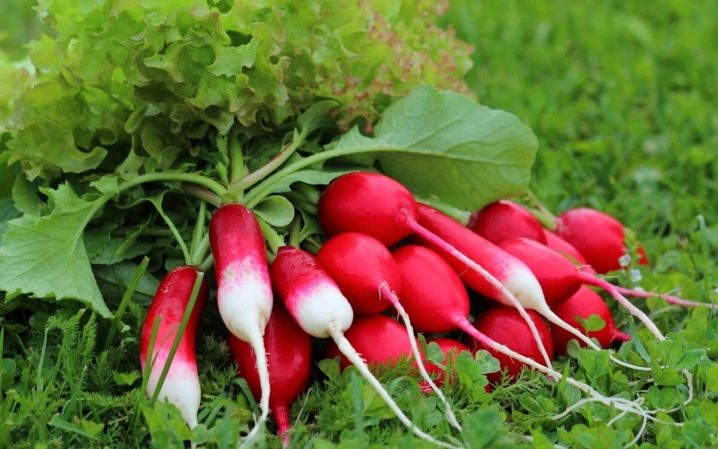
Among the vitamins in this vegetable are present: B9, C, K and some others. Based on the composition, we can conclude that radish is good for the human body. It helps to fight obesity, has a negative effect on inflammation and fungal diseases, and also prevents the development of diabetes.
The vegetable contains indigestible sugars: stachyose, verbascose and raffinose. Due to their presence, some people experience unpleasant symptoms after eating radishes, for example, belching, stomach discomfort, gas. In order to avoid this, you can stew the radish in water a little before use.

For people who suffer from diseases of the gastrointestinal tract, radish is not recommended even in small quantities. Organic acids and mustard oils are especially dangerous in this case.
Origin story
Originally, radish grew in the wild in China and Japan. This vegetable was mentioned several centuries ago. The inhabitants of Ancient Greece and Egypt were also familiar with radishes. But in European countries, they began to grow and eat it only in the 16th century. Then it was incredibly popular in French restaurants, and then it was sold to other countries. And this happened thanks to Marco Polo, who, after returning from a trip to China, brought with him radish seeds. The seeds were brought to Russia by Peter I. This only happened in the 17th century.

Now modern gardeners are trying to grow vegetables on their backyard plots. It appears as one of the first fresh vegetables in every season. During the summer, some manage to get 2-3 harvests.
Comparison with radish
Radish is a type of radish. They have similarities in taste: each has an insignificant bitterness.Moreover, the chemical composition is almost identical.
Despite the many similarities, there are still some differences. The difference is primarily in the size of the roots. Radish is more miniature in this respect. The radish is also distinguished by the color of the peel: it can be black or white. Radishes are always pink or crimson. But recently, varieties with a white peel have become increasingly popular.
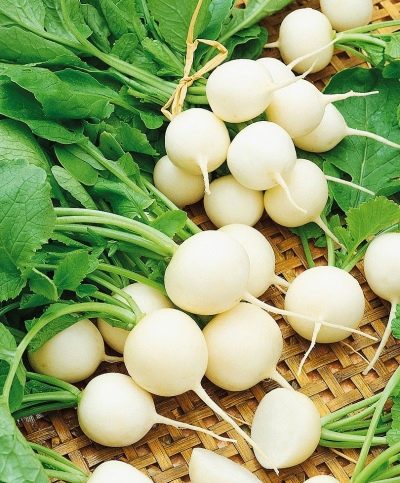
Varieties
A fairly large number of varieties have now been bred. Each of them has special characteristics, on the basis of which gardeners make their choice. The most popular varieties are as follows.
- "Duro" - large-fruited, round-shaped vegetables reach 9 cm in diameter. The inner part consists of a juicy white pulp, which has a fairly dense structure. There are sweet notes in the taste. The ripening period is approximately 25 days after sowing.
- "Early red" Is another equally popular variety. Its distinctive features: large fruits weighing up to 15 g, unusual pale pink flesh. This variety can be stored for a short period in a dark and cool place and even retains its original taste.
- "Zlata" - a variety that looks very similar to a radish. The skin is dirty yellow and contains white flesh inside. The fruits are crispy. Differs in unpretentiousness in care, is able to withstand the period of drought for a long time.
- "Ramposh" - white roots of an elongated shape. They are distinguished by a pronounced bitter aftertaste. The ripening period for this variety is average, ranging from 35 to 40 days.
- "Presto" - early ripening variety that produces small round fruits. Differs in early ripening. This period is only 15-18 days.
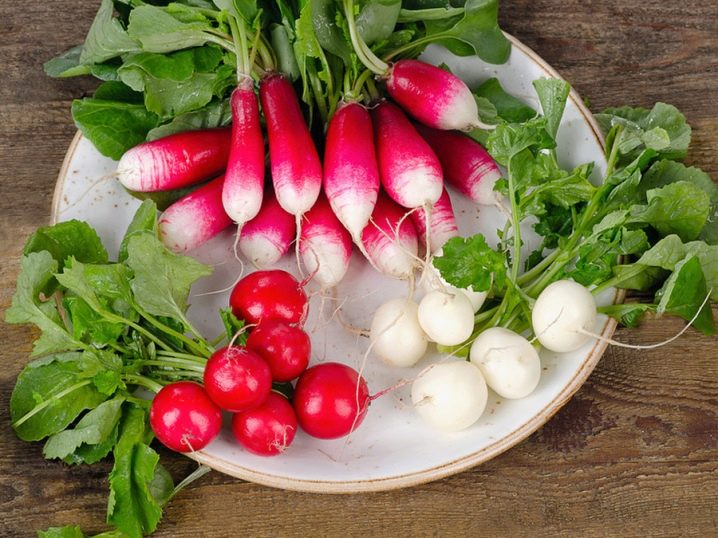
These are far from all varieties, but only the most popular ones. The choice depends on individual preferences and requirements.
Landing
Radish seeds are planted in open ground or in a greenhouse. Planting time depends on the growing region as well as weather conditions. In most cases, this period occurs in mid or late April.
It is recommended to prepare the bed before sowing. The site should be well lit, sheltered from drafts. Radish prefers soft and fertilized soil, with normal acidity levels.
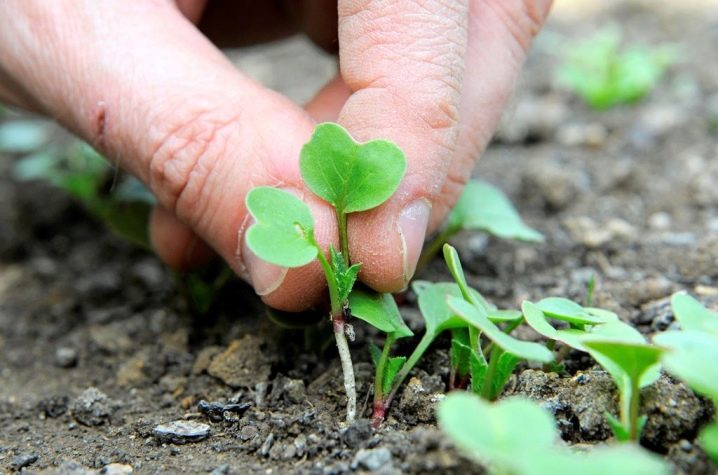
The bed must be dug well, shallow grooves made at a distance of 10-15 cm from each other, and the seeds must be sown. Sprinkle on top with a small layer of fertile soil. Water well.
Care
Comprehensive care is required to get a good harvest. It includes basic procedures: watering, mulching, loosening.
Watering
Watering should be done often at first, then the number of waterings should be reduced. If the weather is rainy, it is not recommended to water at all, since excessive moisture will provoke the formation of rot, and will also attract pests.
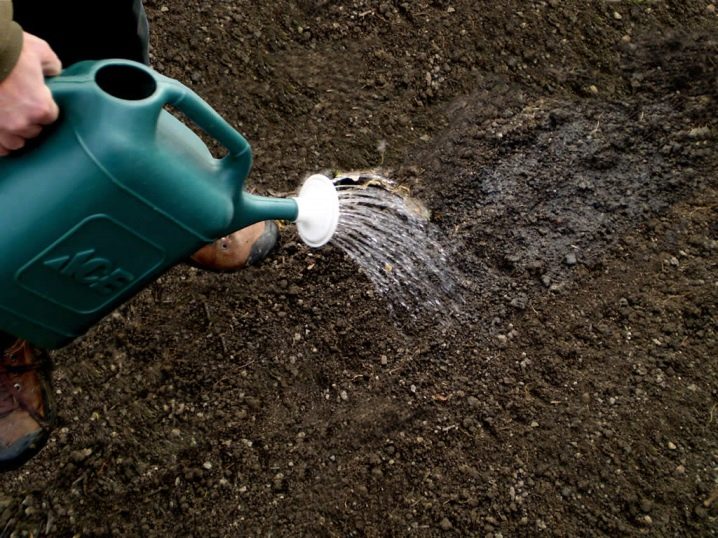
Mulching
It is recommended to mulch the soil between the furrows. This is necessary in order to maintain the humidity level as well as to keep warm. The sawdust layer should not be too thick, since in this case the plantings can simply be matted.

Shelter
If the radishes have been planted in cold weather, it is recommended to make a shelter. The most common greenhouse will do. If it is sunny outside, it is recommended to remove the polyethylene or at least to air it.
Some gardeners choose to grow the vegetable in a greenhouse. This is the right decision, because in this case the harvest will be good and early.
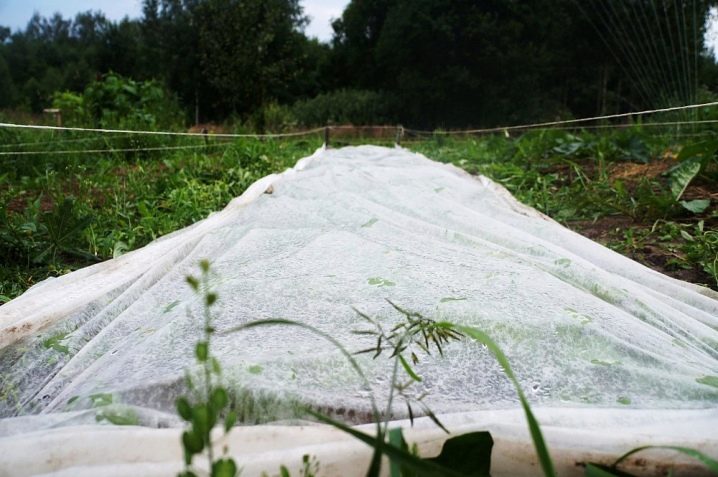
Growing problems
As already mentioned, radishes do not require any special care other than standard procedures. But some problems in the cultivation process can still arise. Let's consider them in more detail.
- If you do not mulch and cover, the radishes can become infected with powdery mildew. In this case, virtually the entire crop will be spoiled.If this happens, it is necessary to immediately stop watering, equip a greenhouse, and remove the affected areas. Chemicals cannot be used, as they will be absorbed by the fruits.
- Pest attack. Among the most common of them: bear, slugs, wireworms. You should try to remove them by hand, monitor the acidity of the soil. From the bear, you can sprinkle the garden with a mixture of kerosene and river sand. The insect does not tolerate this smell, so it will bypass the site.
- With poor seed germination, you should think about changing the variety, and also check whether all the necessary conditions are met at each stage.
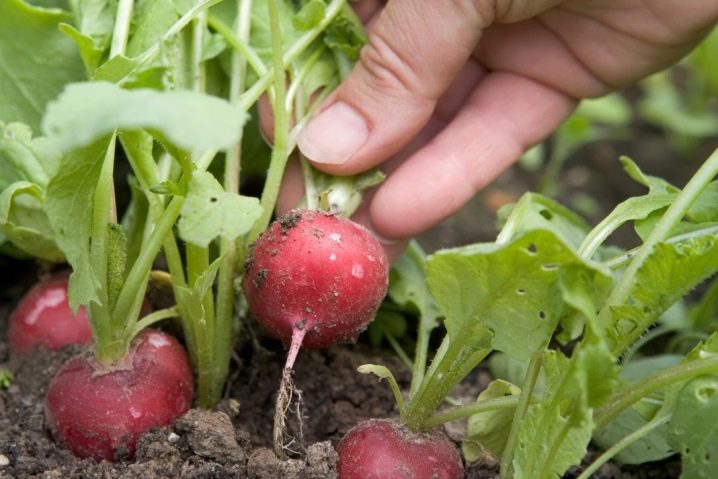
Correct and timely care is the key to a good harvest.
Interesting Facts
Radish is a popular vegetable, also because there are many interesting facts about it.
- Radishes were grown on the International Space Station for research purposes. The ripening period there is the same as on Earth - 30-45 days.
- In Russia, they are used to eating fresh radish, while in France it is usually boiled and even used to make a festive soup.
- You can get rid of bruises with radish juice. It is enough to squeeze it out of the root vegetable onto a napkin and apply it to the bruised area.
- There are even references to radishes in dream books. So, most of them claim that growing radishes in a dream is a fulfillment of desires.
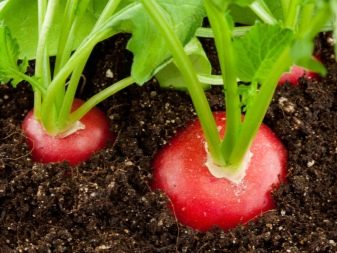

Radish is quite an interesting and healthy vegetable. The culture does not require special care, which means that everyone can grow it.






The comment was sent successfully.